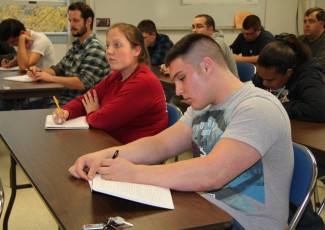Dual-Enrollment Programs On the Rise
By Sonya Stinson
August 5, 2015
Why are they on the rise, and what makes them so successful?
A more intense spotlight on college costs, student readiness and equal access is helping to increase the nationwide interest in programs that let high school students earn college credits. These programs are growing at a rate of about 7 percent per year, according to the National Alliance of Concurrent Enrollment Partnerships (NACEP). Adam Lowe, executive director of NACEP, estimates that more than 20 percent of U.S. high school students are taking at least one college course.
Offering high school students the chance to take college courses for free or a low fee can help offset the rising cost of a college education, Lowe says. In addition, an increased focus on assessing college readiness is prompting many high schools to provide more opportunities for their students to take advanced courses in the subjects in which students excel. Lastly, the growth of dual-enrollment programs is being driven by educators’ desire to see the programs’ benefits reach more students, including those in low-income urban and rural communities.
“With the emphasis on equity in opportunity, we’ve seen more statewide initiatives in the last few years, taking what might have been local programs and bringing them to a wider range of students,” Lowe says.
Successful dual-enrollment programs
A few states have taken a notable lead in accelerating dual enrollment. More than half of all high school students in Iowa and New Mexico are taking college classes, according to NACEP. Besides the fact that the programs are free, new funding and policy measures have boosted the popularity of dual enrollment in those states.
“In the case of Iowa, they have created a financial incentive, in that high schools receive added student weight on their per-pupil funding formula for students taking dual-enrollment coursework,” Lowe says. “New Mexico has done some things on the financial side, but more in the policy structure, to incentivize schools to engage in these partnerships. For example, to earn a regular high school diploma in New Mexico, a student has to take at least one or two advanced courses.”
The success of dual-enrollment students depends a great deal on the kind of support services they receive, and Lowe says that the specific types of courses students are taking will often dictate what they need. He estimates that a third of dual-enrollment programs involve courses in career and technical education. For students in those classes, career counseling and degree planning are a top priority. Students taking general education courses may benefit most from monitoring progress and providing advice to help those students understand how their performance can impact things like financial-aid eligibility when they enroll in college.
A growing number of dual-enrollment programs have shifted from focusing exclusively on high-achieving students to targeting those “in the academic middle,” Lowe says. These students have shown a high potential to succeed in college, and they are likely to enroll, but they may not have had much exposure to college life. Some would be the first generation in their family to attend college. They can gain from interactions with tutors and peer mentors from local college campuses. Lowe notes that some colleges are even inviting concurrent-enrollment students to take advantage of on-campus resources, such as writing centers, libraries and math labs.
The collaboration between participating high school and college staffs is also key to ensuring that students get the most out of these programs. Faculty engagement can help close the gap between what high school instructors are teaching and what college instructors expect entering students to know, Lowe says. NACEP advocates having college faculty members teach professional development to their high school counterparts in the same subject area.
“That has big benefits, not just in the class they’re teaching for college credit, but also in the other classes they teach in the high school,” Lowe says. “Because they understand what the requirements are to succeed in that entry-level [college] course, if they’re teaching a class right below it they now are able to incorporate some of the preparations into that classwork.”









